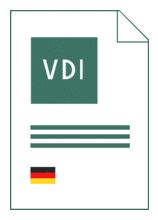Standards Worldwide
Standards Worldwide
Phone +49 30 58885700-07

Technical rule [CURRENT]
VDI 3945 Blatt 3:2020-04
Environmental meteorology - Atmospheric dispersion models - Particle model
- German title
- Umweltmeteorologie - Atmosphärische Ausbreitungsmodelle - Partikelmodell
- Publication date
- 2020-04
- Original language
- German, English
- Pages
- 60
- Publication date
- 2020-04
- Original language
- German, English
- Pages
- 60
Product information on this site:
Quick delivery via download or delivery service
Buy securely with a credit card or pay upon receipt of invoice
All transactions are encrypted
Short description
The standard presents a numerical model, the so-called Lagrangian particle model, for simulating the dispersion and calculating the concentration of trace species in the atmosphere. It lends itself to the solution of current, diagnostic or planning problems. The dispersion model can accommodate terrain regimes like open terrain, topographical structures or obstacles such as buildings, industrial plants, embankments, bridges, trees and forests. Chemical transformation processes (standard VDI 3783 Part 5), sedimentation, deposition on the ground and the vegetation, re-suspension into the atmosphere, washout by precipitation, filtration through porous obstacles and buoyancy effects can be accounted for. The spatial structure and temporal behaviour of the source(s) can be selected at discretion. The model region investigated may reach from several decametres (building complexes) to several hundred kilometres (geographical regions). The time scale for typical applications ranges from about 10 minutes to several days, the treatment of climatological problems over prolonged time spans being, however, also possible. The input data required for the application of this dispersion model such as the mean wind field, turbulence characteristics, emission data are not the subject of this standard (for the requisite information, please refer to VDI 3783 Part 7 to Part 10). The outputs yielded by the model are the three-dimensional concentration field and the two-dimensional distribution of the deposition, if required together with their respective temporal variations.
Content
ICS
07.060,
13.040.01
Replacement amendments
This document replaces VDI 3945 Blatt 3:2000-09 .
Also available in
Loading recommended items...
Loading recommended items...
Loading recommended items...
Loading recommended items...
